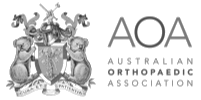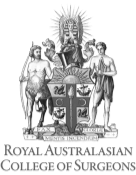Anterior cruciate ligament (ACL) reconstruction: mechanism, diagnosis and treatment
Introduction
One of the most common and serious knee injuries, affecting one in 3,500 people is a tear or rupture of the ACL.
Mechanism of injury
Most are sports-related involving a twisting injury. If the knee changes direction suddenly, or suffers a direct blow – such as hyper-extension during a tackle – the ACL may be stretched beyond its normal range. This can tear the ACL or separate it completely from the bone.
When this happens, the patient may report hearing, or feeling, a popping noise. Swelling usually occurs within the hour and it is very unlikely that the individual will be able to continue playing. Once the initial injury has settled down, the main complaint is “instability” or “giving way”. A complete tear of the ACL can cause recurrent knee instability, which prevents a return to rigorous activity. If a torn ACL remains untreated, the knee can continue to “give way” during normal daily activities.
Diagnosis
Various methods may be used to diagnose an ACL injury and to determine how to treat it. These include taking or undertaking the following:
- a history of the injury (this is most helpful to making a diagnosis).
- a physical examination – if the patient is adequately relaxed, has no pain and little swelling, an examination may reveal points of instability.
- a pivot shift test[1][2] – this is the most specific clinical test (able to accurately reflect a true negative ie showing that the patient does not have the problem indicating an ACL rupture). This test can be classified into Grade 0 (normal), Grade 1 (glide), Grade 2 (jerk), Grade 3 (clunk).You may find the following YouTube video a useful reference:
- a Lachman’s test – recognised as the most reliable and sensitive clinical test to determine anterior cruciate ligament displacement and is classified as Grade 1 (-0-5mm), Grade 2 (5-10mm), and Grade 3 (>10mm displacement when compared with the normal side). You may find the following YouTube video a useful reference:
- an anterior drawer test – classified as Grade 1 (-0-5mm), Grade 2 (5-10mm), and Grade 3 (>10mm displacement when compared with the normal side).
These tests help to differentially diagnose ACL injury from damage to:
- extensor mechanism/patellofemoral instability
- medial collateral ligament (MCL)
- posterior cruciate ligament (PCL)
- posteroloateral corner injuries.
An MRI (magnetic resonance imaging) scan is very helpful to determine the extent of the injury, and can also identify other intra-articular pathology e.g. meniscal tears/concomitant ligament injuries.
Treatment
Initial treatment follows the RICE rule: Rest the joint, Ice the injured area to reduce swelling, Compress the swelling with an elastic bandage, and Elevate the injured area. In the longer term, not everyone needs surgery, but the patient should give up twisting sports if they have a deficient ACL.
Indications for surgery
The major indications for surgery are people who are:
- young patients with an active lifestyle
- involved in twisting sports (i.e. rugby, soccer, netball, etc.)
- reporting functional instability with daily activities
- employed in dangerous occupations (i.e. painters, roofers, firemen, policemen, etc.).
Graft selection and morbidity
In Queensland, the standard of care for primary ACL reconstruction is to use the hamstring tendons. Patellar tendon grafts are usually reserved for revision cases. Ligament augment devices (e.g. LARS) are controversial and are not currently recommended by the Australian Knee Society. While occasional use of allograft may be considered, it must be fresh-frozen and is, therefore, difficult to find.
Postoperative morbidities associated with the use of hamstring tendon for ACL reconstruction include:
- numbness due to an inferior branch of saphenous nerve injury
- decrease in strength at deep flexion angles
- soreness, which may persist for 2-3 months after surgery.
Postoperative morbidities associated with the use of bone-patellar tendon-bone (BTB) for ACL reconstruction include:
- anterior knee pain – however, this is controversial and thought to be due to poor rehabilitation rather than graft choice (17% BTB Vs. 12% HS)
- possibly decreased quadricep strength
- patella fractures/tendonitis/tendon ruptures
- patella baja (scarring decreases patella’s height).
Rehabilitation protocol
The Brisbane Knee and Shoulder Clinic’s ACL Rehabilitation protocol is available on our website. Please click here for full details.
When to refer a patient
Patients should be referred for further assessment or diagnostic tests if they:
- have developed a swollen knee (haemarthrosis) after a sporting injury
- experience symptoms of instability (including pain) with twisting activities
- want to continue playing twisting sports
- could be put at further risk at work from an unstable knee.
[1] Ayeni OR, et al. Knee Surg Sports Traumatol Arthrosc (2012) 20;767-777 Pivot shift as an outcome measure for ACL reconstruction: a systematic review. Tanaka M, et al. Knee Surg Sports Traumatol Arthrosc (2012) 20;737-742
[2] Tanaka M, et al. Knee Surg Sports Traumatol Arthrosc (2012) 20;737-742 What does it take to have a high-grade pivot shift?















